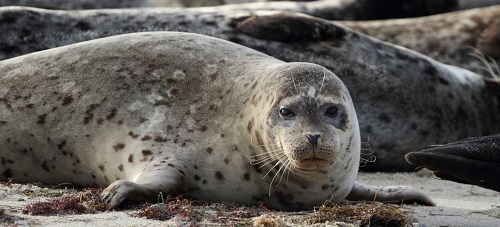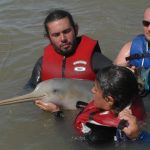← Back
Shedding light on the life of spotted seals in the Sea of Japan

At the 2nd Argos Asian Wildlife Tracking Workshop in Incheon, Korea, Dr. Mari Kobayashi, Ph.D, will present her work “Estimation on area of use and feeding patterns by Argos satellite-tracking of the spotted seals in the Sea of Japan”.
Understanding spotted seal spatial use
In this fascinating study, Dr. Kobayashi and her colleagues used Argos satellite tags fitted to individuals in the Bakkai port, Hokkaido, Japan, during winter and spring. The objective of their study was to identify and analyze the sea areas where the seals stayed, their haul-out locations, and their diving behavior in order to clarify what the areas were being used for.
Argos tags for 23 seals
From February 2009 to February 2013 (mainly in December and February), a total of 23 immature individuals (18 males, 5 females) were fitted with SRDL (Sea Mammal Research Unit) Argos satellite transmitters.
From winter to spring, spotted seals centered at Bakkai port distributed over a wide area of about 1,000 km between the Tatar Strait in the north to the Shakotan Peninsula of Hokkaido in the south. There are at least four patterns in which seals cyclically use surrounding sea areas as feeding grounds while using Bakkai port as a haul-out site. In each pattern, the main feeding grounds were located in sea areas off Bakkai port, southwest of Rishiri Island (about 100 km apart), in Ishikari Bay (about 250 km apart), and in the Tartar Strait (about 500 km apart). The periods of movement between sea areas for the four patterns were 1 day, about 2 weeks, about 4 weeks, and about 6 weeks, respectively.
Dr. Mari KOBAYASHI, PhD., and Veterinarian

Dr. Mari Kobayashi, PhD. and Veterinarian
Dr. Mari Kobayashi has been a Professor of the Department of Aqua-Bioscience and Industry, Faculty of Bioindustry, Tokyo University of Agriculture from 2006 and managing director of Marine Wildlife Center of Japan (Incorporated Non Profit Organization / NPO) from 2003.
She graduated from the Faculty of Veterinary Medicine, Hokkaido University in 1995 and got her PhD at Hokkaido University in 2005.


